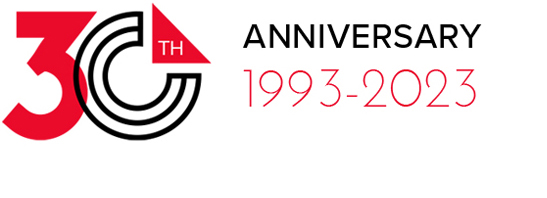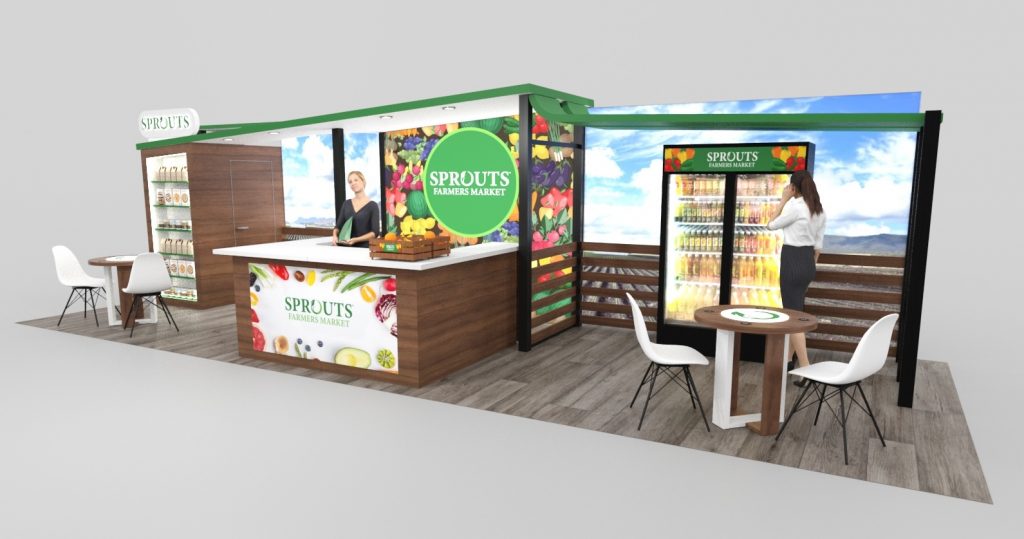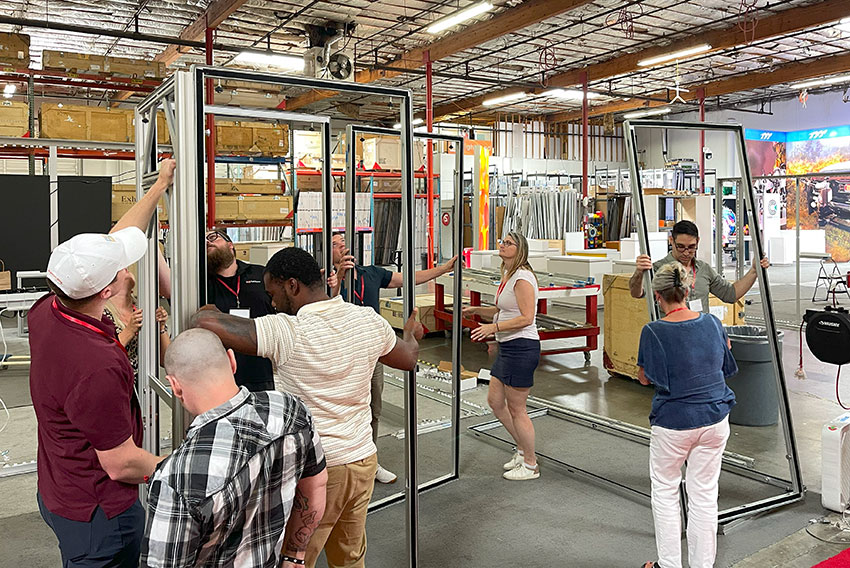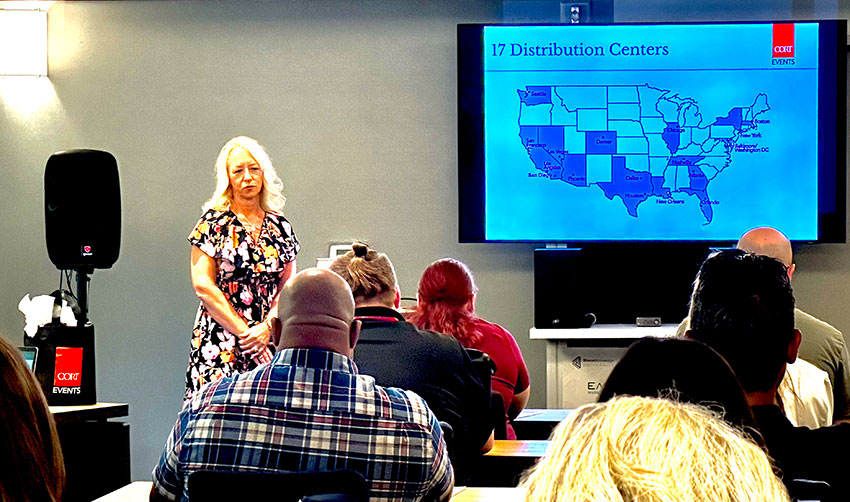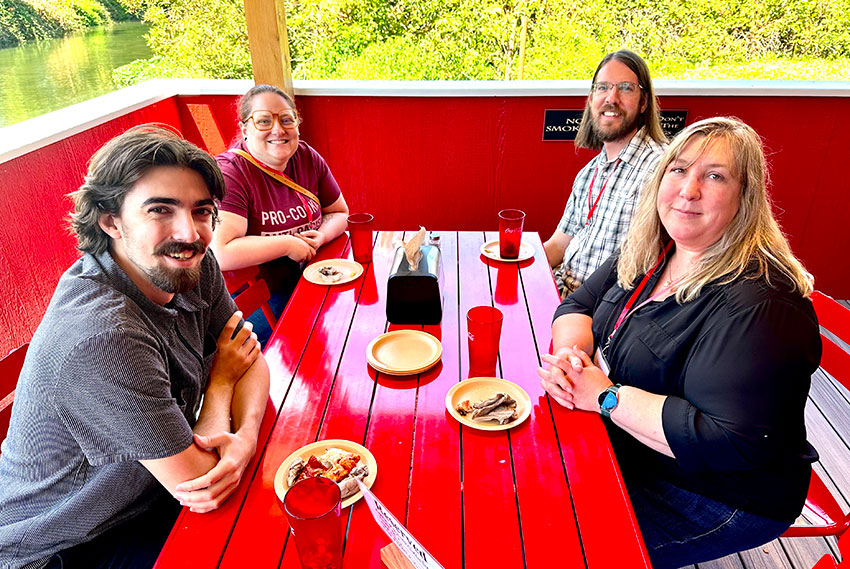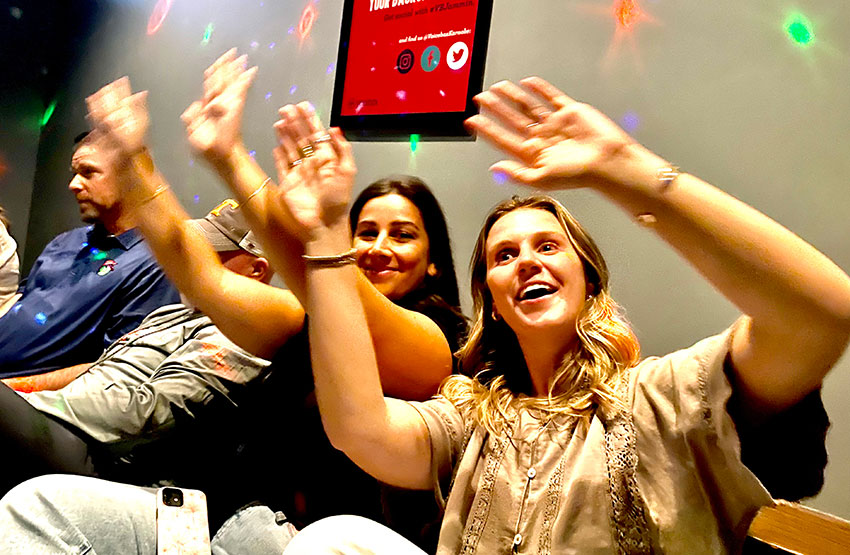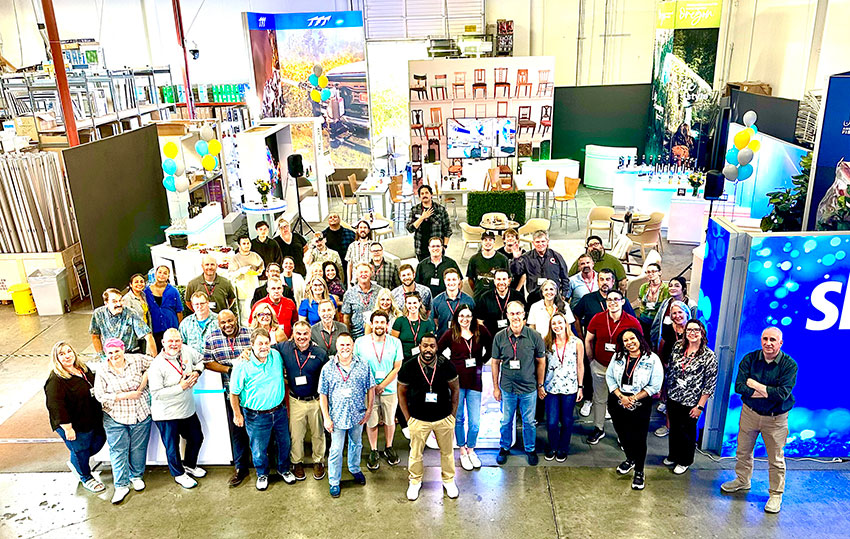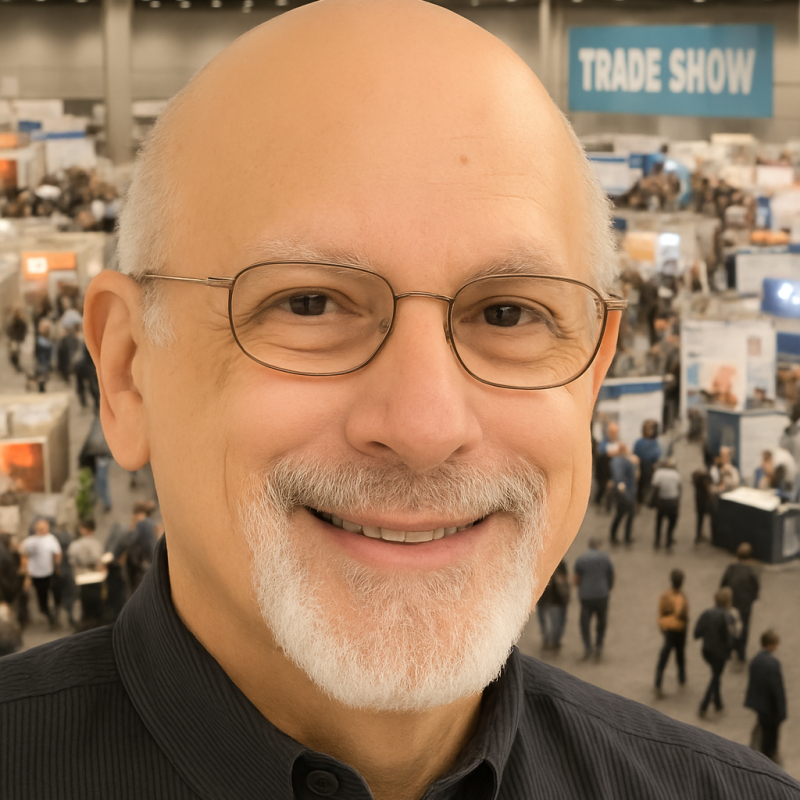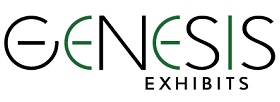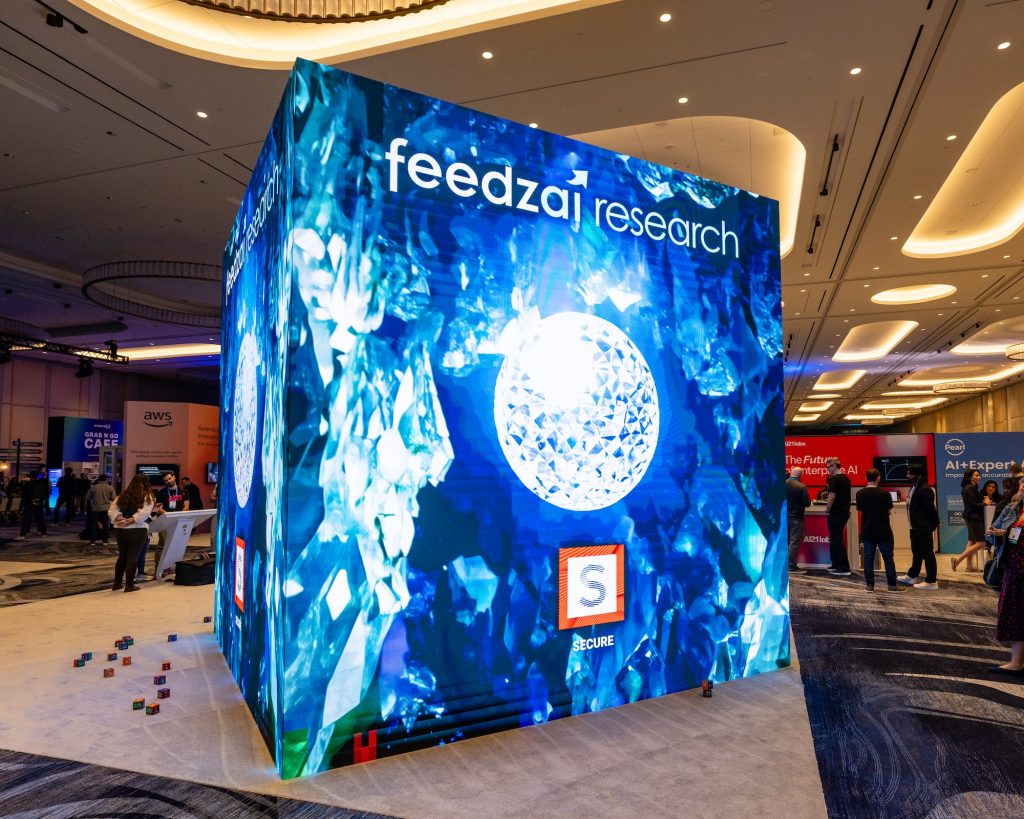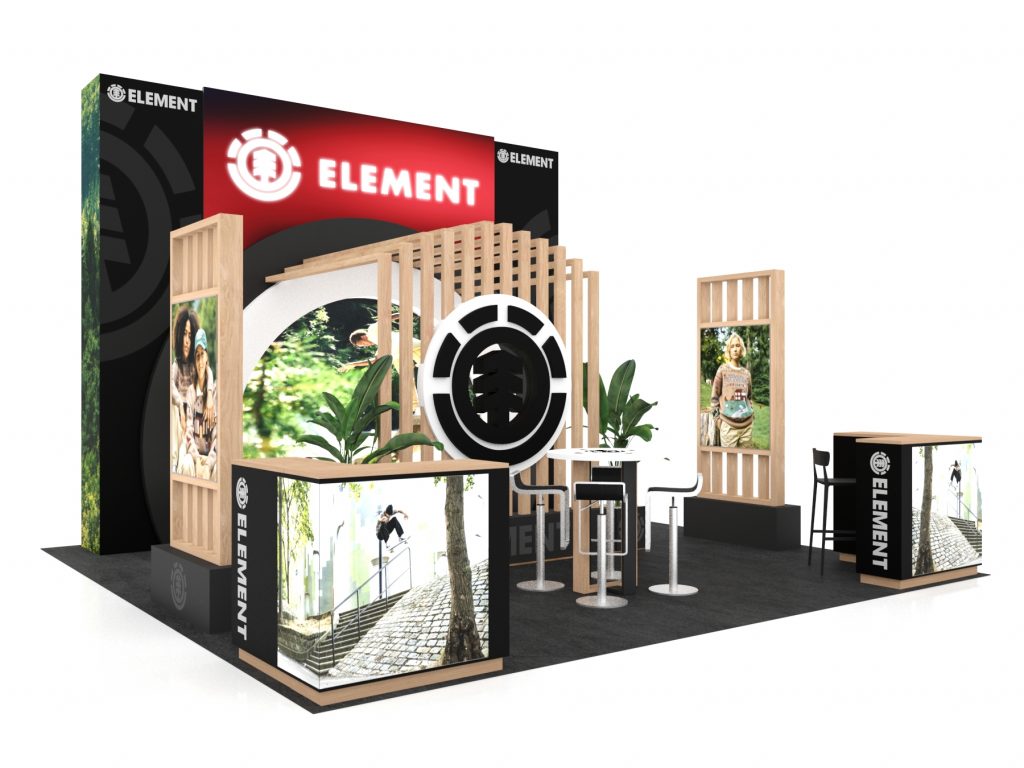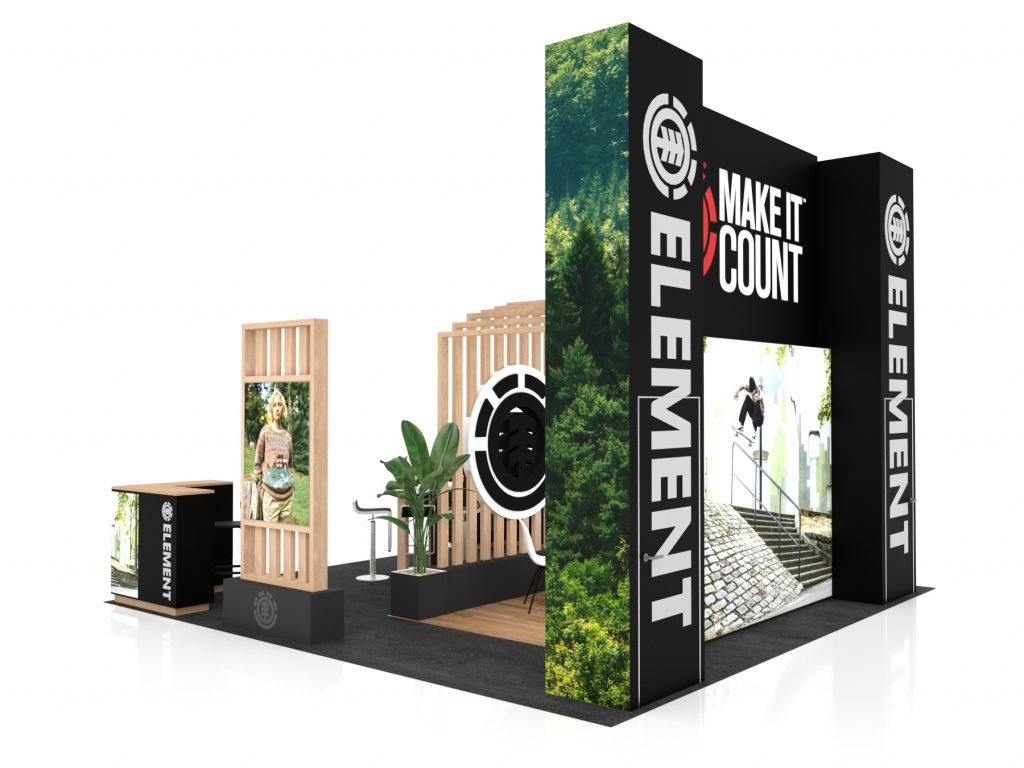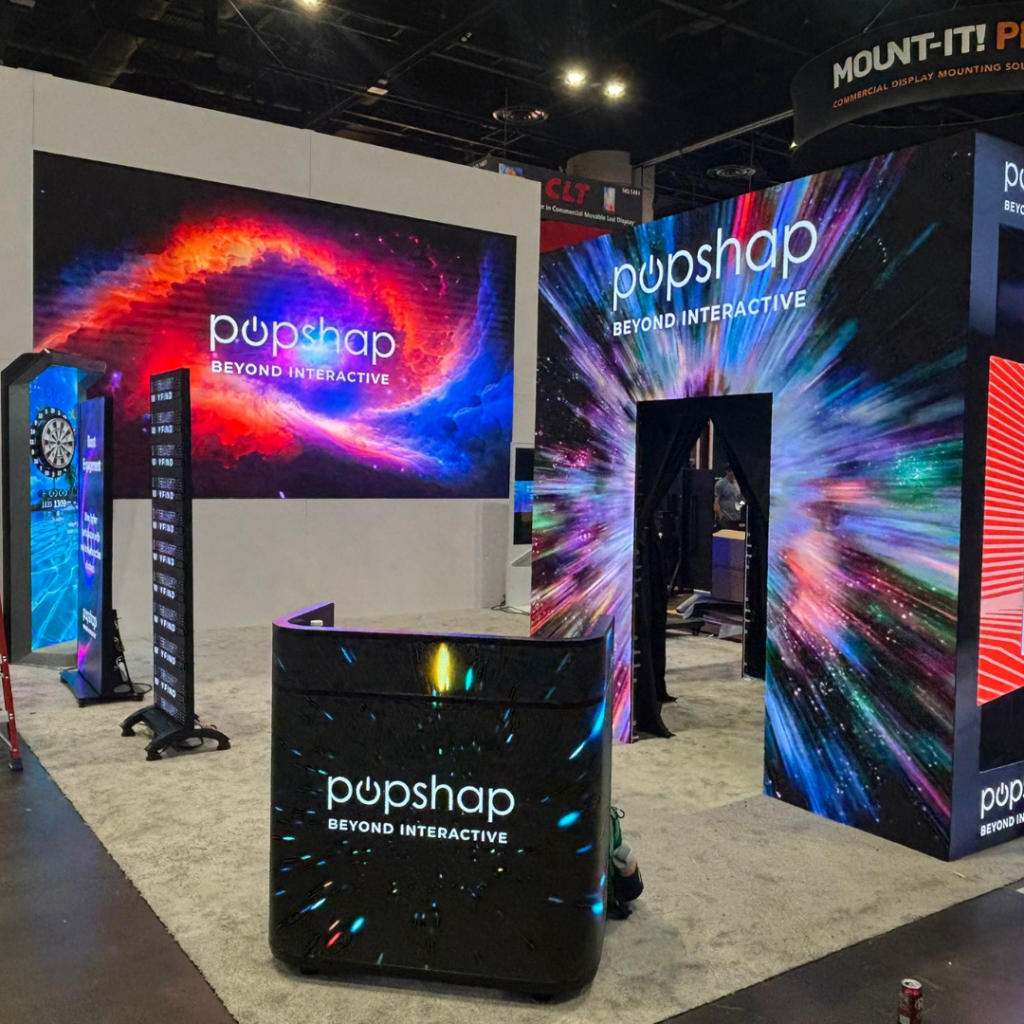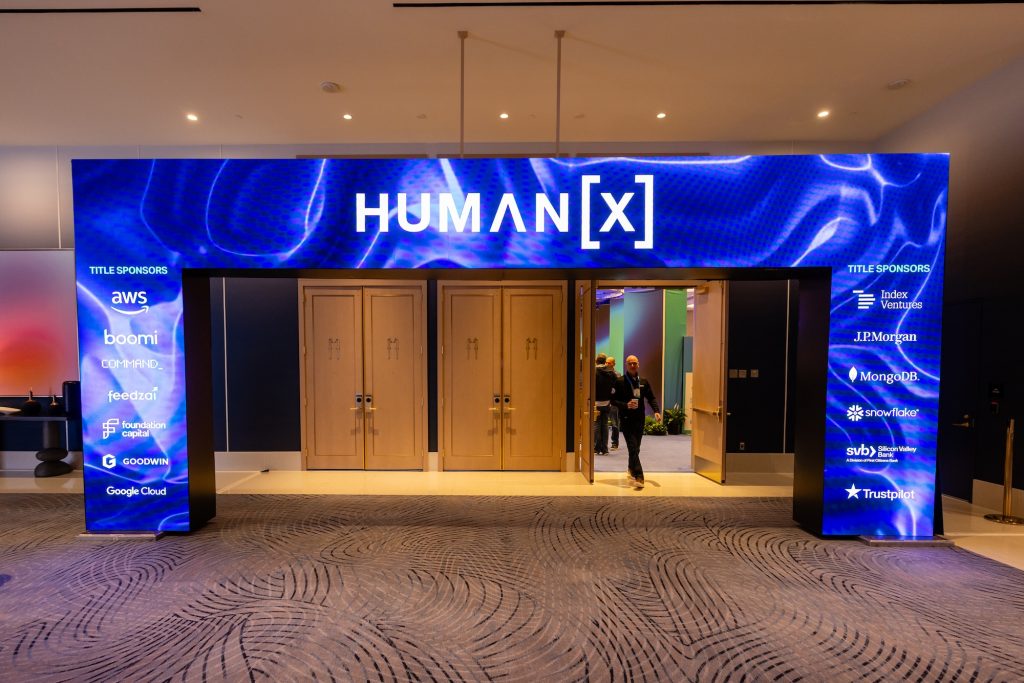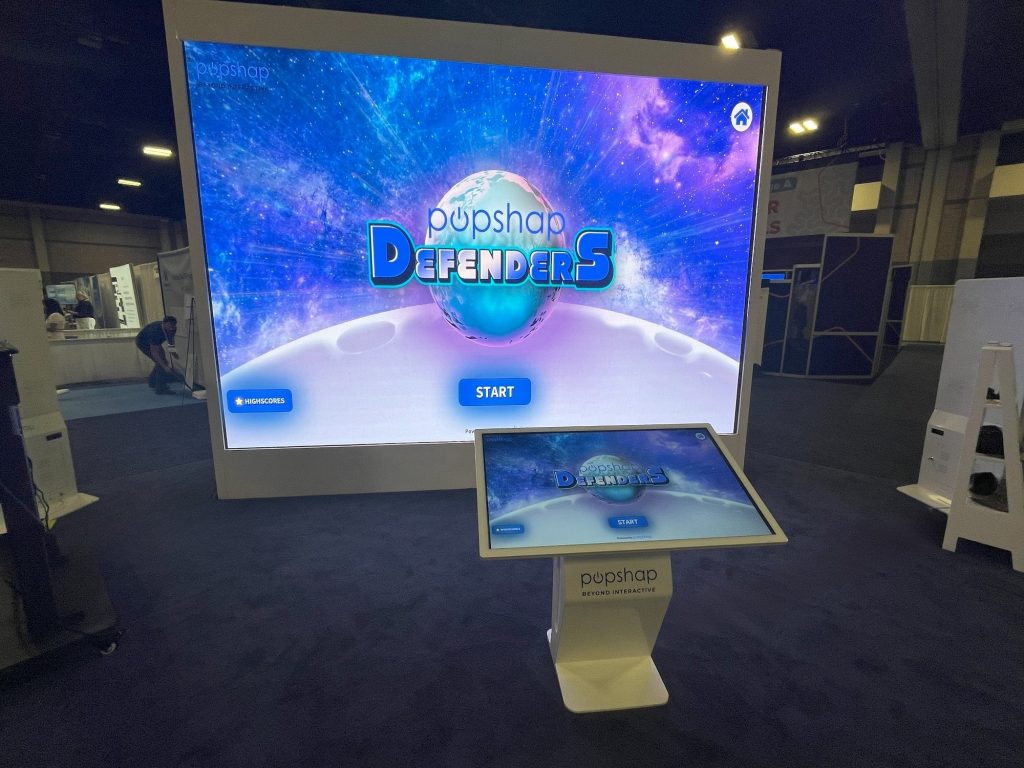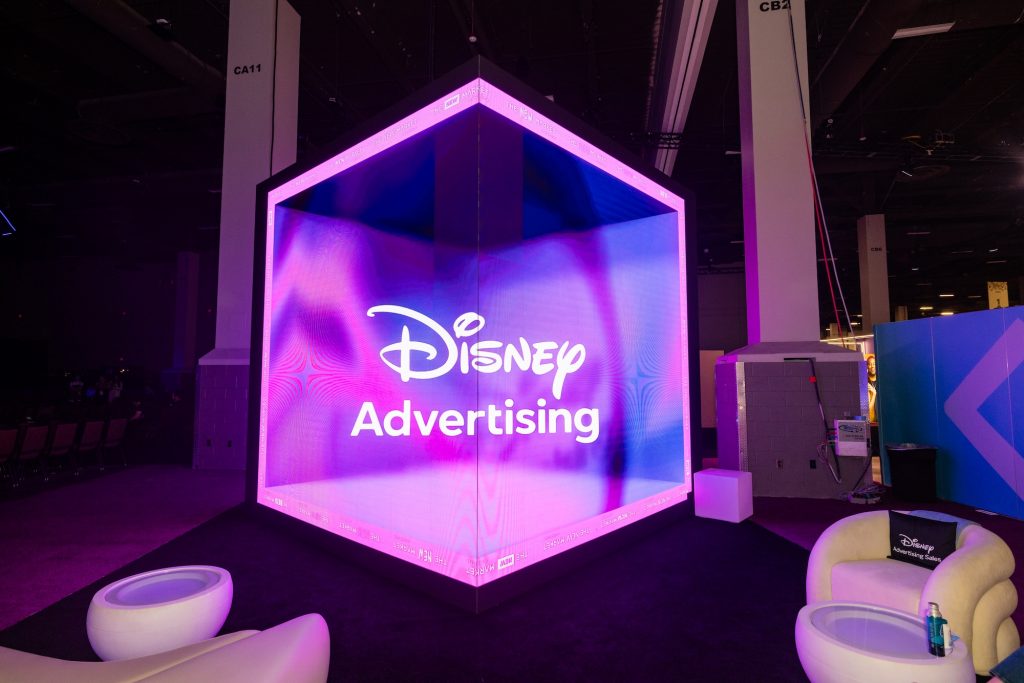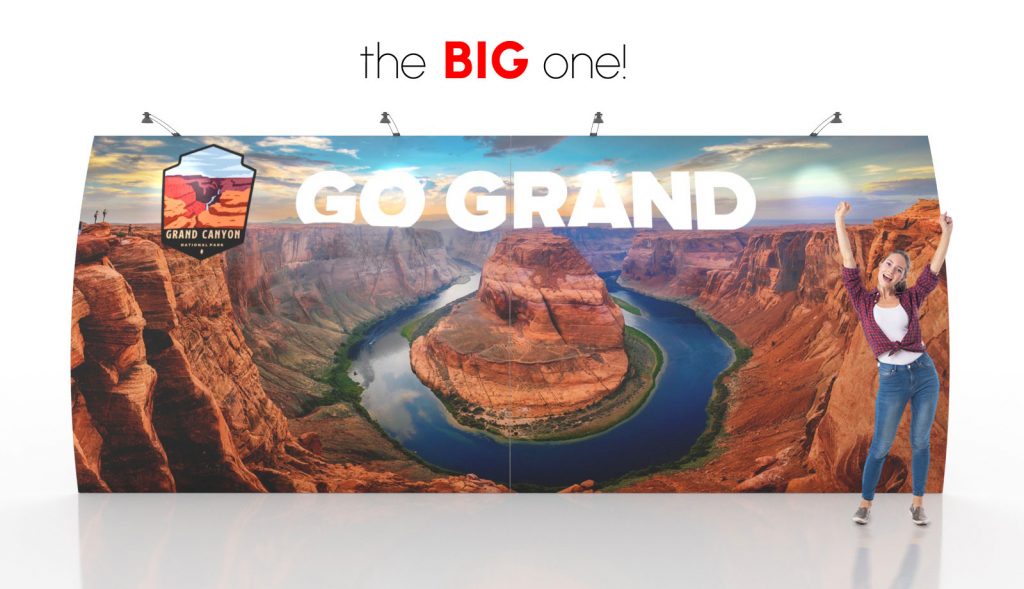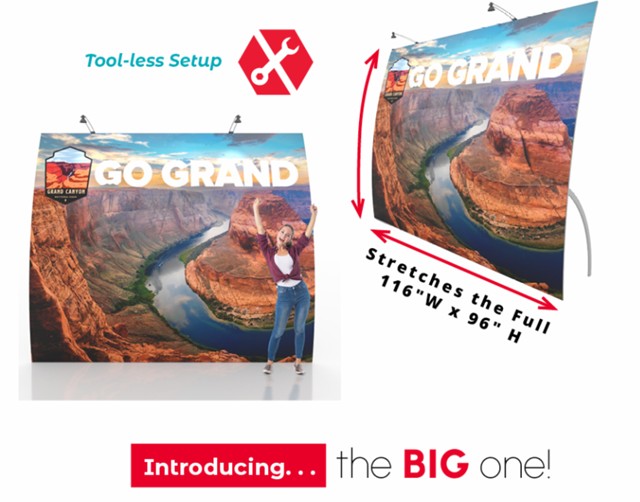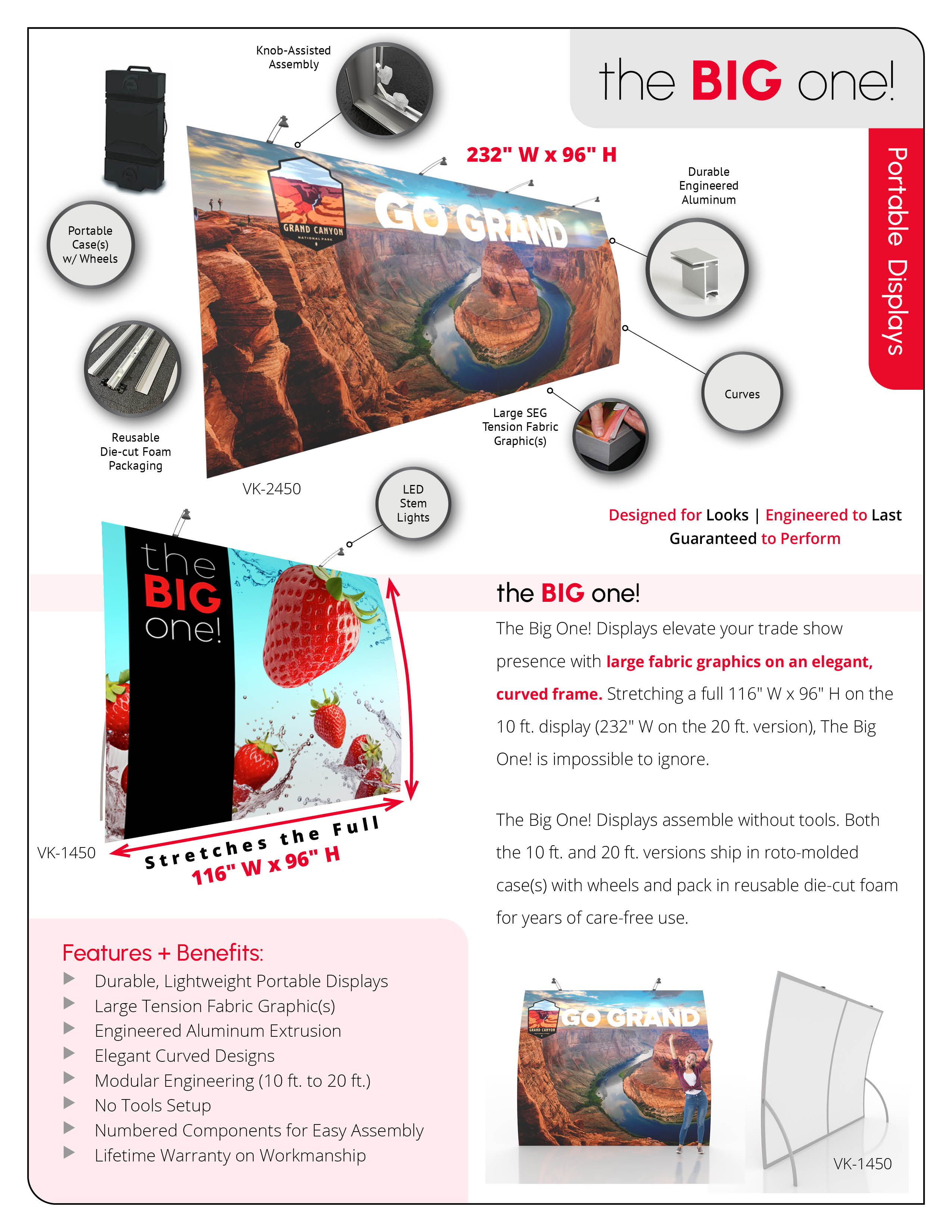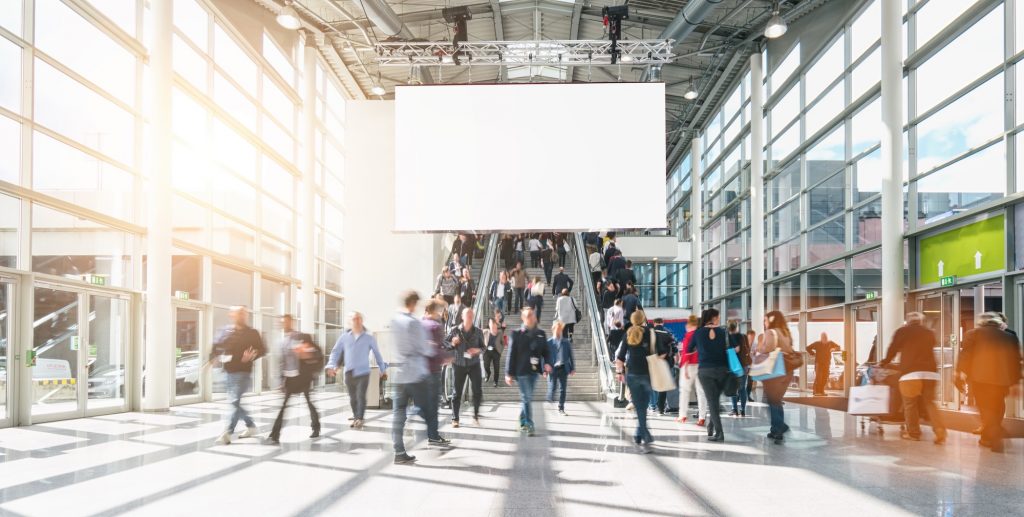
What are the biggest and best convention centers in the United States? And does overall size and location matter when it comes to a convention center? Unless you’re a trade show nerd (like me), you’ve probably never wondered if the Las Vegas Convention Center is bigger than McCormick Place in Chicago. Or if the Orange County Convention Center is in FL or CA?
In this article, we’re going to do a deep dive into fun facts and important information about convention centers in the US. You’ll sharpen your exhibition trivia while storing valuable knowledge for the Jeopardy category “USA Convention Centers,” which is likely to be a Daily Double. Along the way, we’ll connect these venues to some of the biggest trade shows in North America, so you can see how scale and location shape the events that dominate the industry.
First, what is a Convention Center? A convention center, also known as a conference center or exhibition hall, is a large building(s) designed to host a variety of large-scale events. These events can include conventions, trade shows, conferences, exhibitions, and other large gatherings where groups of people come together to share common interests, promote businesses, or learn about specific topics.
The 5 Benefits of Convention Centers to Cities in the USA
While the direct financial performance of the center itself can sometimes be a challenge, the broader economic and social benefits it generates often far outweigh the operating costs.
#1. Tourism and Visitor Spending: Convention centers are primary drivers of business tourism. They attract thousands or even hundreds of thousands of out-of-town attendees who would not have otherwise visited the city. These delegates spend significant amounts of money on hotels, restaurants, transportation, retail, and entertainment.
#2. Job Creation: The presence of a convention center creates both direct and indirect jobs. Direct jobs include those related to the center’s operations, such as event managers, security, catering, and maintenance staff. Indirect jobs are created in the hospitality, retail, and transportation sectors to support the increased visitor traffic.
#3. Increased Tax Revenue: The spending by convention attendees generates significant tax revenue for the city and state through various sources, including sales tax, hotel occupancy tax, and property taxes from the surrounding businesses that benefit from the center.
#4. Catalyst for Development: A new or expanded convention center often acts as a catalyst for urban development. It encourages private investment in nearby hotels, restaurants, and entertainment venues to accommodate the influx of visitors. This can revitalize downtown areas and create a more attractive and walkable environment for both tourists and residents.
#5. Elevated City Profile: Hosting major conventions and trade shows raises a city’s profile on a national and international scale. It positions the city as a major business destination and a hub for specific industries, such as technology, medicine, or the arts. This enhanced reputation can attract new businesses and talent.
The 11 Biggest Convention Centers in the US for Trade Shows
Measuring the size of convention centers can be done in a few ways, but the most common metric is the total square footage of exhibit space. This is often more telling than the overall “campus” size, as it represents the usable area for trade shows and exhibitions.
Note the location of the 10 biggest convention centers. Some are obvious, like Las Vegas. Others, however, may seem surprising, like Louisville.
List-style breakdown of each venue, including:
- Name & Location
- Exhibit square footage
- Notable events or industries hosted
- Why it stands out for exhibitors
Based on exhibit space, here are the 10 largest convention centers in the USA:
1. McCormick Place (Chicago, Illinois):
- Exhibit Space: Approximately 2.6 million sq. ft.
- (4) interconnected buildings on the Lake Michigan waterfront
- Notable Trade Shows:
- International Manufacturing Technology Show (IMTS)
- National Restaurant Association Show (NRA Show)
- PACK EXPO International
2. Las Vegas Convention Center (Las Vegas, Nevada)
- Exhibit Space: Approximately 2.5 million sq. ft.
- One of the busiest convention centers in the world.
- Notable Trade Shows:
- Consumer Electronics Show (CES)
- SEMA Show
- National Hardware Show (NHS)
- NAB Show (National Association of Broadcasters)
3. Orange County Convention Center (Orlando, Florida)
- Exhibit Space: Approximately 2.1 million sq. ft.
- Third largest convention center in the country
- Notable Trade Shows:
- PGA Show
- Premiere Orlando
- Global Pet Expo
4. Georgia World Congress Center (Atlanta, Georgia)
- Exhibit Space: Approximately 1.5 million sq. ft.
- A sprawling campus that also includes Centennial Olympic Park
- Notable Trade Shows:
- International Production & processing Expo (IPPE)
- International Woodworking Fair (IWF)
- AEE World (Association of Energy Engineers)
5. Kentucky Exposition Center (Louisville, Kentucky)
- Exhibit Space: Approximately 1.2 million sq ft.
- A sprawling facility with both indoor, outdoor, and arena spaces
- Notable Trade Shows:
- National Farm Machinery Show
- Mid-America Trucking Show (MATS)
- North American International Livestock Exposition (NAILE)
6. New Orleans Ernest N. Morial Convention Center (New Orleans, Louisiana)
- Exhibit Space: Approximately 1.1 million sq. ft.
- Adjacent to the Mississippi River and close to the historic French Quarter.
- Notable Trade Shows:
- NADA Show (National Automobile Dealers Association)
- AAOS Annual Meeting (American Academy of Orthopaedic Surgeons)
- Global Security Exchange (GSX)
- International Gem & Jewelry Show
7. Kay Bailey Hutchison Convention Center (Dallas, Texas)
- Exhibit Space: Approximately 1 million sq. ft.
- Centrally located in DT Dallas
- Notable Trade Shows:
- NAHB International Builders’ Show
- International Air-Conditioning, Heating Refrigeration Exposition (AHR Expo)
- The Great American Trucking Show (GATS)
8. The Venetian Convention and Expo Center (Las Vegas, Nevada)
- Exhibit Space: Approximately 936,600 sq. ft.
- Formerly known as The Sands. Connected to The Venetian and The Palazzo hotels.
- Notable Trade Shows:
- SHOT Show
- HIMSS Global Health Conference & Exhibition
- AWS re:Invent
9. Huntington Place (Detroit, Michigan)
- Exhibit Space: Approximately 723,000 sq. ft.
- Located on the Detroit waterfront.
- Notable Trade Shows:
- North American International Auto Show (NAIAS)
- FABTECH
- Automate
10. Indiana Convention Center (Indianapolis, Indiana)
- Exhibit Space: Approximately 750,000 sq. ft.
- Connected via skywalks to 12 hotels and the Lucas Oil Stadium
- Notable Trade Shows:
- Gen Con
- National FFA Convention & Expo
- PRI Trade Show (Performance Racing Industry)
11. San Diego Convention Center (San Diego, California)
- Exhibit Space: Approximately 615,700 sq. ft.
- Located on the San Diego Bay.
- Notable Trade Shows:
- Comic-Con International
- TwitchCon
- Society for Neuroscience (SfN) Annual Meeting
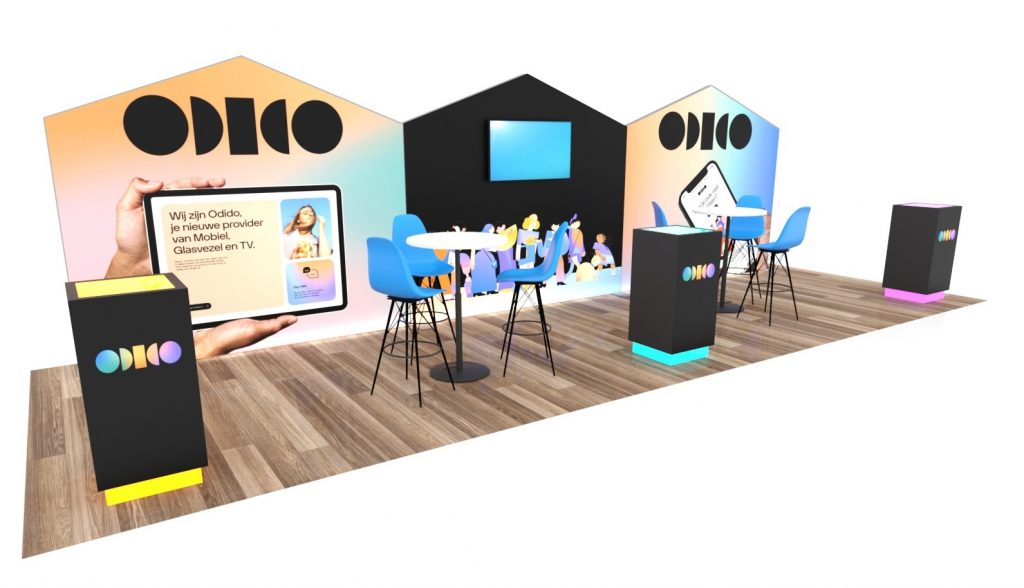
Best Convention Centers in the US (Beyond Just Size)
While the largest convention centers get most of the attention, many other venues across the U.S. offer unique and compelling features that make them “fun” or interesting destinations. They often stand out for their architecture, location, or the specific types of events they host. Here are more of the best convention centers in the US.
Music City Center (Nashville, Tennessee): This center stands out for its unique architectural design that pays homage to the city’s musical heritage. The building’s exterior features curves and lines that mimic a guitar, and its interior incorporates musical themes throughout. It’s also known for its sustainability efforts, including a green roof that’s shaped like a guitar.
Colorado Convention Center (Denver, Colorado): Located in downtown Denver, the center is known for its stunning mountain views, and its modern, open design allows for plenty of natural light. It also has an adjacent theater complex, the Bellco Theatre, making it a versatile venue for a variety of events, including concerts and corporate meetings.
Miami Beach Convention Center (Miami Beach, Florida): This convention center is not just a venue; it’s a centerpiece of a major cultural and entertainment destination. It’s a short walk from famous beaches, world-class restaurants, and the vibrant South Beach nightlife.
Oregon Convention Center (Portland, Oregon): A landmark in the Pacific Northwest, this convention center is known for its twin glass spires that light up at night. It’s conveniently located on Portland’s light rail line, making it easy for attendees to explore the city’s famous food scene and quirky neighborhoods. The center is committed to sustainability and has a reputation for its local, organic, and farm-to-table food options.
Anaheim Convention Center (Anaheim, California): While not in the top 10 by size, its location makes it one of the most fun and family-friendly convention centers. Situated directly across from Disneyland and next to several major hotels, it’s a perfect spot for events that attract a younger or family-oriented demographic.
Seattle Convention Center (Seattle, Washington): The Seattle Convention Center is a unique venue that seamlessly blends with the city’s urban landscape. With the recent opening of its new Summit building, it’s become a major player in the convention world, praised for its innovative and sustainable design.
How to Choose the Right Convention Center for Your Brand
As a trade show exhibitor, you may have little input on the location of your major trade shows. Those are determined by your industry association and its members. Many trade shows have been at the same convention center for years, like the International Auto Show in Detroit. Smaller shows may be in multiple locations, like Comic-Con or auto shows, so you can decide which trade shows are a better fit for your business model.
Strategic Tips:
Location and Industry: Trade show organizers often claim the location doesn’t matter, which is why so many are held in Las Vegas, Chicago, or Orlando. But location does matter in certain industries. Farm shows for example. The larger shows are held in the Midwest, with smaller ones in regional agricultural centers. RV Shows are less location based with shows across the country. Medical show locations, like HIMSS Global Health, tend to be dictated by their members, who are more willing to travel to new locations each year.
Support Services and Regulations: Cost varies depending on the convention center. Sadly, there’s no one uniform set of rules across the country. For example, in Orlando, you can install your own lights, but in Chicago, you must hire electricians. The regulations for hanging signs vary significantly by location and the cost can be 3-4X higher. Consult with your exhibit house about the specific regulations for your show.
Budget: No one has an unlimited budget for trade show marketing. Choices have to be made about which trade shows to attend. Your decision shouldn’t be about which show costs more or costs less. It should be based on your planned or historical Return on Investment. While a show in Boston may be significantly more expensive, if your sales opportunities are 3-4X compared to a show in Indianapolis, then it might be worth the added cost.
Timing and Opportunities: The ebbs and flows of every business depend on a myriad of factors. Some shows may not match your sales cycle. If you’re in the toy business, the annual Toy Fair in February is ideal. ConEXPO-CON/AGG, a construction trade show held every three years in Las Vegas, depends less on the date than the general health of the economy. If your business is experiencing a financial downturn that year, it doesn’t matter if the show is held in March or in September.
Competition: Sometimes it pays to be seen, especially at a major trade show in the larger convention centers. Trade shows are one of the few instances where competitors stand toe-to-toe in one location. Larger locations like the Las Vegas Convention Center are specifically designed to be a petri dish of capitalism, where companies can showcase their latest products and services and gain insights on their competitors.
Tips for Exhibiting at Top Convention Centers
Exhibiting at large convention centers in the US requires a strategic and well-planned approach to stand out and achieve your goals. These massive venues, like McCormick Place in Chicago or the Las Vegas Convention Center, present unique challenges and opportunities. Start by meeting with your exhibit house partner and approach each trade show like it’s your most important marketing event of the year.
1. Plan Plan Plan
- Start Early: Begin your planning 6 to 12 months in advance for major shows. This is crucial for securing a prime booth location and avoiding rush fees.
- Set Goals and Objectives: Before you do anything else, define what you want to achieve. Are you focused on lead generation, brand awareness, or launching a new product? Your goals will inform every decision, from your booth design to your staff’s talking points.
- Create and Track Your Budget: Costs can spiral out of control. Create a comprehensive budget that accounts for booth space, exhibit design, shipping, labor, travel, accommodations, and marketing.
2. Strategic Booth Selection and Design
- Location: Aim for high-traffic areas. This includes corner booths, spaces at the end of aisles, or locations near main thoroughfares, restrooms, food courts, or key conference rooms. Avoid spots with obstructions like pillars.
- Motion, Lights, and Colors: Use bold visuals, oversized signage, and vibrant colors to make your booth visible from a distance. Keep your messaging concise and easy to understand.
- Use Your Space Strategically: Avoid barriers like tables blocking the entrance. Incorporate interactive elements, such as product demos, digital displays, games, or charging stations, to draw attendees in. Provide seating areas for more in-depth conversations.
3. Master the Logistics
- Shipping and Material Handling: Understand the specific rules and deadlines for shipping your materials. Many venues have official contractors for drayage (the movement of materials on the show floor). Using them can simplify the process, even if it comes at a higher cost.
- Label everything: Label every box, crate, and container with your company name, the event name, and your booth number. Include an inventory list inside each box.
- Understand the On Site Services: Familiarize yourself with the process for ordering electricity, internet access, and other services. Bring a “trade show survival kit” with essential items like power strips, zip ties, and a basic toolkit.
- Ship to the Advanced Warehouse: Many venues offer the option to ship your materials to a local warehouse in advance. This can help you avoid on-site delays and fees.
4. Staffing and Engagement
- Booth Staff Training: Don’t send rookies. Ensure your staff is knowledgeable about your products/services and understands the event’s goals. Conduct a practice run to rehearse talking points and lead-capture methods.
- Capturing Sales Leads: Have a system in place for capturing leads, whether it’s badge scanning, a mobile app, or a simple notebook. Take detailed notes so you can personalize your follow-up.
5. Pre- and Post-Show Marketing
- Pre-show Promotion: Use email campaigns and social media (with the event hashtag) to let your network know you’ll be there. Offer incentives like exclusive demos or giveaways to drive booth traffic.
- Networking: Study the event schedule, floor plan, and list of exhibitors. Reach out to potential clients or partners beforehand to schedule meetings.
- Post Show Marketing: The most critical part of the process is following up on your leads. Aim to send personalized emails to hot leads within 24-48 hours of the show’s end. This is a key factor in converting leads into sales.
- Evaluate Your Data: After the show, debrief internally to review what worked and what didn’t. Track your ROI by comparing the cost of exhibiting against the value of the leads and sales generated.
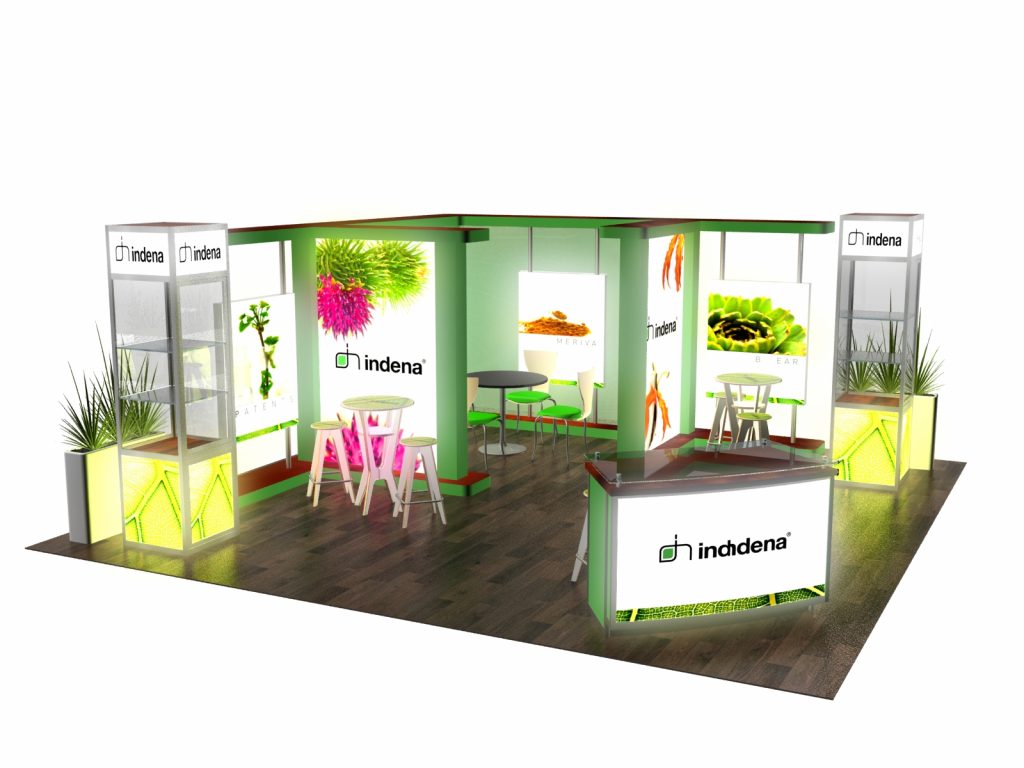
Exhibiting at One of The Largest Convention Centers in the US? Let’s Talk!
Congratulations! You are now a trivia expert on the largest convention centers in the US. While that may win you a bar bet, it won’t ensure your next trade show is a success. It’s time to elevate your trade show marketing strategy and ROI to historic levels. Marketing professionals rely on exhibition experts to guide them through the nuances and landmines of trade shows. No show, no industry, and no convention center is the same. Smart exhibitors use that knowledge to their strategic advantage.
For over 30 years, Classic Exhibits has been designing and building creative custom solutions for our Distributor Partners and their clients. As North America’s largest private-label exhibit manufacturer, we have the unmatched capability, capacity, and creativity to create 3D projects ranging from 10 x 10 inline displays to 60 x 80 double-deck islands. Find success on the trade show floor with an exhibit that reflects your marketing message. For more information, see www.classicexhibits.com and explore Exhibit Design Search or request a meeting with a Classic Distributor Partner.


